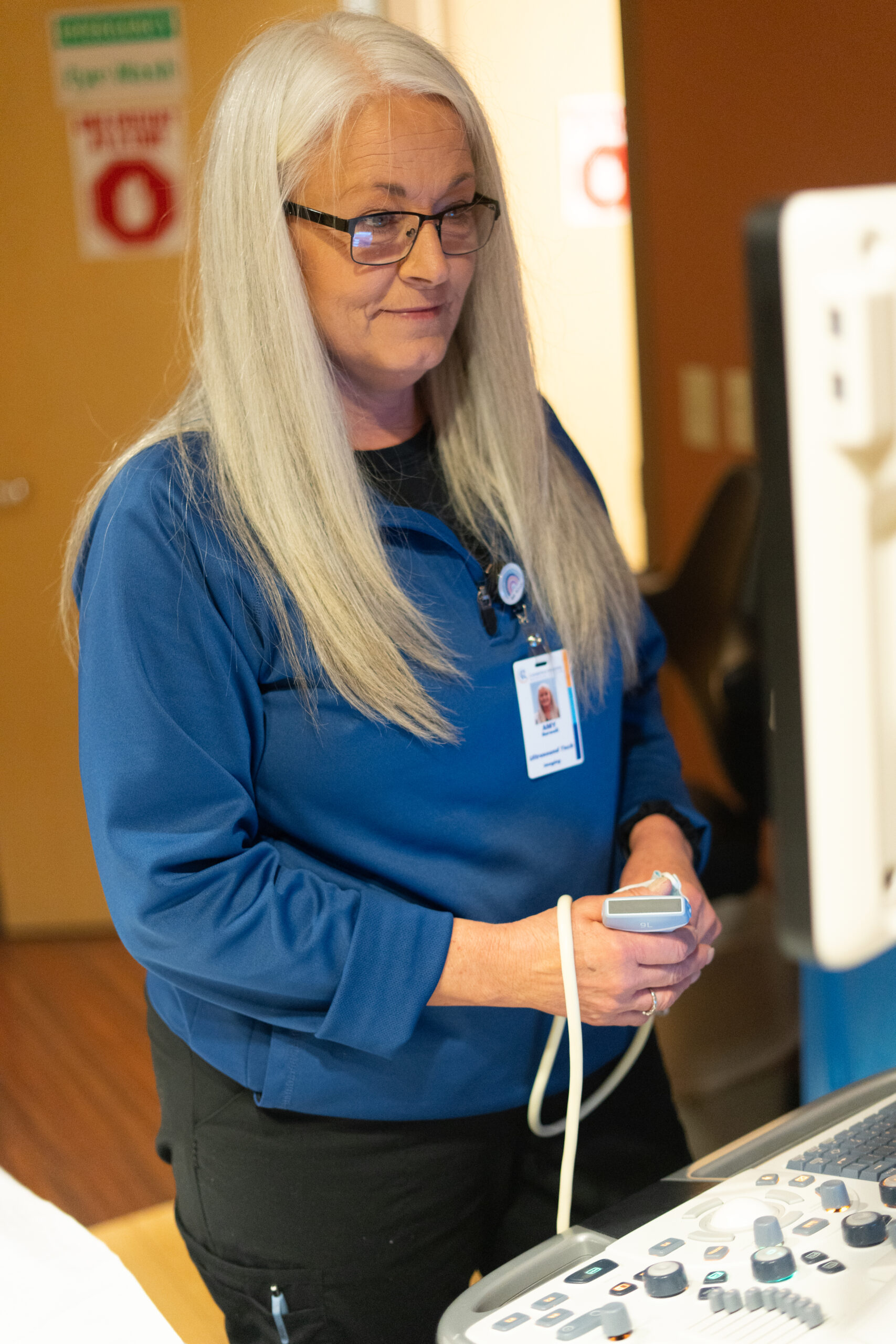Ultrasound
Safe, accurate medical imaging
test using sound waves.
What is an Ultrasound?
Ultrasound waves are sound waves whose frequency is higher than the range of human hearing, similar to the technology of sonar. Ultrasound is non-ionizing, which means no radiation is involved, which makes ultrasound one of the safest imaging exams available.
An ultrasound exam is a medical study ordered by a qualified physician.

What does an ultrasound look at?
The purpose of the exam is to image specific organs, regions or systems of the body. An ultrasound may be ordered to evaluate many regions of the body and may include evaluation of:
- Abdominal organs – liver, gallbladder, kidneys, pancreas
- Pelvic organs – uterus, ovaries, bladder, testicles, prostate
- Peripheral vascular – arteries and veins of the arms and legs
- Internal vasculature – aorta, vena cava, renal arteries, etc.
- Cerebrovasculature – arteries and veins of the head and neck
- Obstetrics – prenatal OB, early pregnancy
- Internal studies – vaginal evaluation of female pelvis, or rectal evaluation of prostate
- Other uses – thyroid, breast, guidance for invasive procedures such as biopsy or drainage
Patient instructions
Depending on the type of ultrasound examination you are having, you may be asked to perform a specific prep.
PELVIC/EARLY OBSTETRIC
You will be asked to fill your bladder for these tests. You will be asked to drink at least 32 oz. of fluid one hour prior to the examination and not go to the restroom until the exam is complete. The reason for this prep is that a full bladder provides a fluid filled window into the pelvis by pushing the bowel up and allowing the pelvic organs to be visualized. Ultrasound passes easily through the fluid in the bladder but does not penetrate the bowel due to its high air content.
ABDOMINAL, GALLBLADDER, AORTA, KIDNEY, ABDOMINAL VASCULATURE
You will be asked not to eat or drink anything eight hours prior to your examination. By not eating, you will reduce the amount of air in your intestines. Ultrasound does not penetrate the bowel well due to its high air content. If necessary, you may take your regular medicines with a small sip of water.